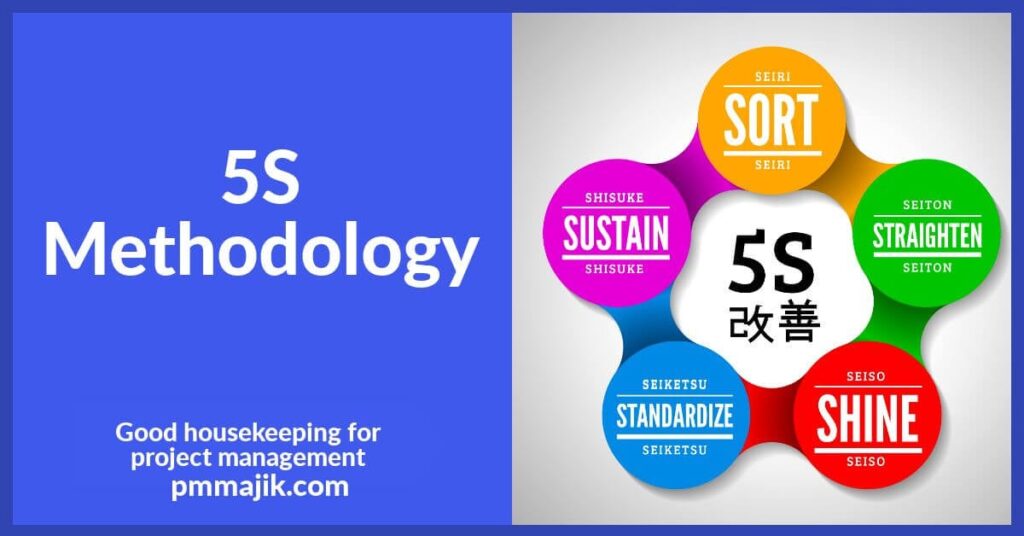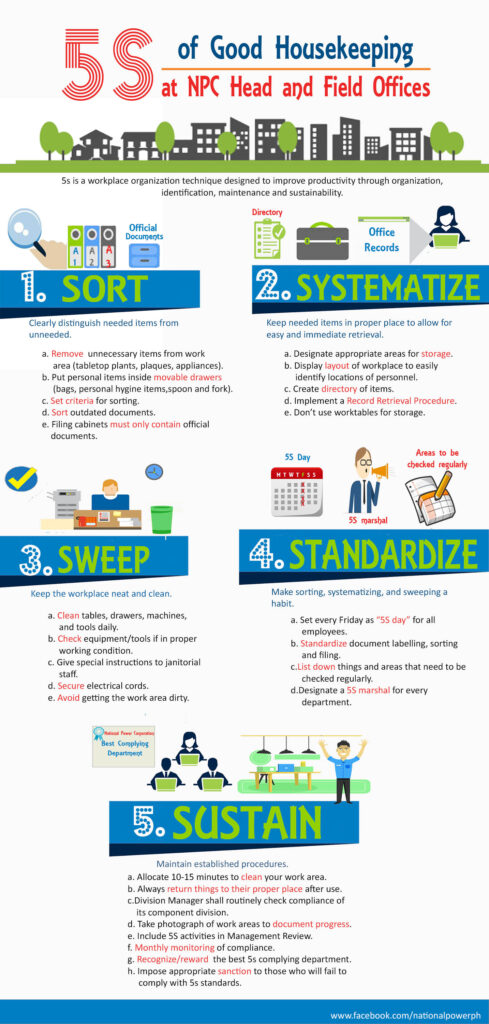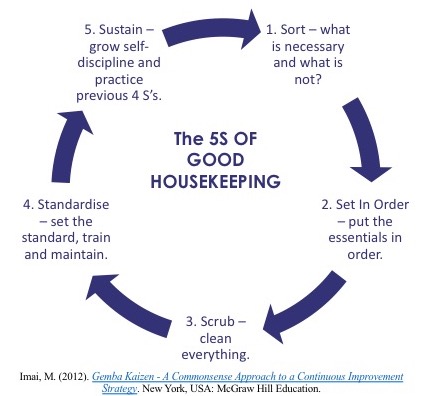So you’re wondering what exactly makes for good housekeeping? Well, let me tell you, it’s not just about tidying up and keeping things organized. Good housekeeping encompasses a range of practices that help maintain a clean and safe living environment. From regular cleaning routines to proper storage and maintenance, these five key elements of good housekeeping are essential for creating a welcoming and functional space in your home. So, if you’re ready to bring some order and harmony into your life, let’s dive into what exactly those five elements are.
The Importance of Good Housekeeping
When it comes to creating a clean and organized home, maintaining a healthy and safe environment should be a top priority. Good housekeeping not only enhances the overall appearance of your living space, but it also contributes to your well-being and promotes a more efficient and peaceful lifestyle. In this article, we will explore the five key aspects of good housekeeping, including cleaning, organization, maintenance, safety measures, and sustainability. By implementing these practices, you can create a harmonious and functional space that you can truly call home.

This image is property of www.pmmajik.com.
1. Cleaning
Regular Cleaning Schedule
Establishing a regular cleaning schedule is crucial for maintaining a clean and tidy home. By incorporating a routine, you can ensure that the cleaning tasks are distributed evenly throughout the week or month, preventing overwhelming clutter or dirt buildup. Consider scheduling specific days or times for different tasks, such as dusting, vacuuming, mopping, and bathroom cleaning. This approach will not only simplify the cleaning process but also prevent procrastination and ensure that your home remains consistently clean.
Effective Cleaning Techniques
Knowing the right cleaning techniques can make your cleaning efforts more efficient and effective. For example, when dusting, start from the top of the room and work your way down to avoid redistributing dust. Utilize microfiber cloths or dusters to capture dust particles effectively. When vacuuming, use long, overlapping strokes to pick up dirt and debris efficiently. Research proper techniques for cleaning different surfaces, such as wood, glass, and stainless steel, to prevent damage and achieve optimal results. By employing effective cleaning techniques, you can ensure a pristine environment without wasting time or energy.
Cleaning Products and Tools
Selecting the right cleaning products and tools is essential for achieving a clean and hygienic home while also minimizing environmental impact. Consider using eco-friendly and non-toxic cleaning solutions to protect your health and the planet. Natural ingredients like vinegar, lemon juice, and baking soda can effectively clean various surfaces and eliminate odors. Invest in high-quality cleaning tools, such as microfiber cloths, mops, and brushes, to simplify your cleaning tasks. Additionally, having a well-stocked cleaning caddy or storage area will ensure that you have all the necessary supplies readily available, making your cleaning routine more convenient and seamless.

This image is property of i.ytimg.com.
2. Organization
Decluttering and Minimalism
Decluttering is an essential step in maintaining an organized and functional home. Start by assessing each room and identifying items that are no longer needed or bring you joy. Embrace the principles of minimalism and let go of excess belongings that only contribute to clutter. Donate or sell items that are in good condition but no longer serve a purpose in your life. By reducing the number of possessions, you can create a more spacious and visually pleasing environment that is easier to manage and maintain.
Storage Solutions
Investing in suitable storage solutions is crucial for keeping your home organized and clutter-free. Utilize different storage options, such as shelves, cabinets, baskets, and containers, to maximize space and keep items neatly organized. Consider utilizing vertical space efficiently by installing wall-mounted shelves or using over-the-door organizers. Labeling boxes and bins can also streamline your storage system, making it easier for you to find specific items when needed. Remember to regularly assess your storage solutions and make adjustments as your needs change over time.
Efficient Use of Space
Maximizing the use of space is key to maintaining an organized and functional home. Take advantage of unused or under-utilized areas, such as hallways, corners, and under-bed storage. Invest in furniture pieces that offer storage compartments, such as ottomans or coffee tables with built-in drawers. Utilize multifunctional furniture, such as sofa beds or extendable dining tables, to optimize space without sacrificing functionality. By adopting efficient use of space techniques, you can make the most of your living area, allowing for easy movement and reducing clutter.

This image is property of www.napocor.gov.ph.
3. Maintenance
Regular Maintenance Tasks
Regular maintenance tasks are necessary for preserving the functionality and longevity of your home. Create a checklist of routine maintenance tasks, such as checking for leaks, inspecting electrical systems, changing air filters, and cleaning gutters. Perform these tasks at regular intervals to prevent minor issues from turning into costly repairs. Implementing preventive maintenance practices will not only save you money in the long run but also contribute to the overall safety and comfort of your home.
Home Repairs
Addressing home repairs promptly is essential for maintaining a safe and functional living environment. Make it a priority to fix any broken or damaged items, such as leaky faucets, squeaky doors, or cracked tiles. Regularly inspect your home for signs of wear and tear, and take immediate action to prevent further damage. If you are not confident in your repair skills, consider hiring professionals to ensure the job is done correctly and avoid potential safety hazards. By promptly addressing repairs, you can maintain a well-functioning home and prevent small issues from escalating into major problems.
Appliance Upkeep
Taking care of your household appliances is crucial for their longevity and reliable performance. Follow the manufacturer’s guidelines for cleaning and maintenance to ensure optimal functionality. Regularly clean the filters of appliances such as air conditioners and vacuums, and inspect for any signs of wear or malfunctions. Schedule professional maintenance, such as HVAC servicing, on a regular basis to avoid breakdowns and improve energy efficiency. Proper appliance upkeep not only extends their lifespan but also reduces energy consumption and contributes to a more sustainable home.

This image is property of www.habitsforwellbeing.com.
4. Safety Measures
Fire Safety Precautions
Implementing fire safety precautions is vital for protecting your home and loved ones. Install smoke detectors on every floor of your home and test them regularly to ensure they are functioning correctly. Place fire extinguishers in easily accessible areas and familiarize yourself with their proper usage. Develop a fire escape plan and practice it with your family to ensure everyone knows what to do in the event of an emergency. Additionally, avoid overloading electrical outlets and regularly check for frayed wires or any potential fire hazards. By prioritizing fire safety, you can minimize the risk of fire-related accidents and protect your home.
Childproofing
If you have children or frequently have young visitors, ensuring a childproof home is of paramount importance. Install safety gates at the top and bottom of staircases to prevent falls and injuries. Secure heavy furniture or appliances to the wall to avoid tipping accidents. Keep harmful substances, sharp objects, and small choking hazards out of reach by utilizing childproof locks and storage solutions. Cover electrical outlets with safety plugs and use cord organizers to eliminate potential hazards. By implementing adequate childproofing measures, you can create a safe and nurturing environment for young ones to explore and grow.
Fall Prevention
Preventing falls is crucial, especially for older adults who may be more susceptible to injuries. Make sure all areas of your home are well-lit to minimize tripping hazards. Install handrails on staircases and grab bars in bathrooms to provide support and stability. Secure rugs and mats with non-slip pads to prevent slippage. Keep walkways and entrances clear of clutter or obstacles. Regularly inspect and maintain outdoor areas to ensure they are safe and free from hazards, such as loose tiles or cracked pathways. By prioritizing fall prevention, you can minimize the risk of accidents and create a safe environment for everyone in your home.

This image is property of image.slidesharecdn.com.
5. Sustainability
Environmentally Friendly Practices
Adopting environmentally friendly practices in your household not only benefits the planet but also promotes a healthier and more sustainable lifestyle. Reduce your energy consumption by turning off lights when not in use, utilizing natural lighting when possible, and investing in energy-efficient appliances. Conserve water by fixing leaks, taking shorter showers, and utilizing water-saving fixtures. Embrace recycling and composting to reduce waste sent to landfills. Choose eco-friendly and sustainable products whenever possible, such as biodegradable cleaning solutions and reusable shopping bags. By incorporating sustainable practices into your daily life, you can contribute to a greener future for generations to come.
Energy Efficiency
Improving energy efficiency in your home can help reduce your carbon footprint and lower utility bills. Consider upgrading to energy-efficient appliances, such as ENERGY STAR-rated models, that consume less electricity or water. Install programmable thermostats to regulate temperature settings and reduce energy waste. Improve insulation in your home to prevent heat or cool air from escaping, resulting in reduced energy consumption. Utilize natural ventilation or fans instead of relying solely on air conditioning. By making energy-efficient choices, you contribute to the overall sustainability of your home and help preserve the environment.
Waste Management
Implementing proper waste management practices is crucial for reducing landfill waste and promoting sustainability. Embrace recycling by separating recyclable materials from general waste and utilizing designated recycling bins. Compost organic waste, such as food scraps, to enrich your garden or donate to local composting facilities. Reduce single-use plastic consumption by opting for reusable alternatives, such as water bottles, bags, and food containers. Consider donating or repurposing items instead of throwing them away. By practicing responsible waste management, you can minimize your environmental impact and contribute to a more sustainable future.
In conclusion, good housekeeping encompasses several essential aspects that are crucial for creating a clean, organized, and safe home environment. By incorporating regular cleaning routines, effective cleaning techniques, and utilizing appropriate cleaning products and tools, you can maintain a pristine living space with ease and efficiency. Decluttering, utilizing suitable storage solutions, and maximizing the use of space contribute to an organized and functional home. Regular maintenance tasks, prompt home repairs, and proper appliance upkeep ensure the longevity and safety of your home. By implementing fire safety precautions, childproofing measures, and fall prevention strategies, you create a secure environment for yourself and your loved ones. Finally, adopting sustainable practices, promoting energy efficiency, and practicing responsible waste management contribute to a greener and more eco-friendly lifestyle. So, embrace the importance of good housekeeping and create a haven that reflects your unique style while promoting overall well-being and sustainability.

